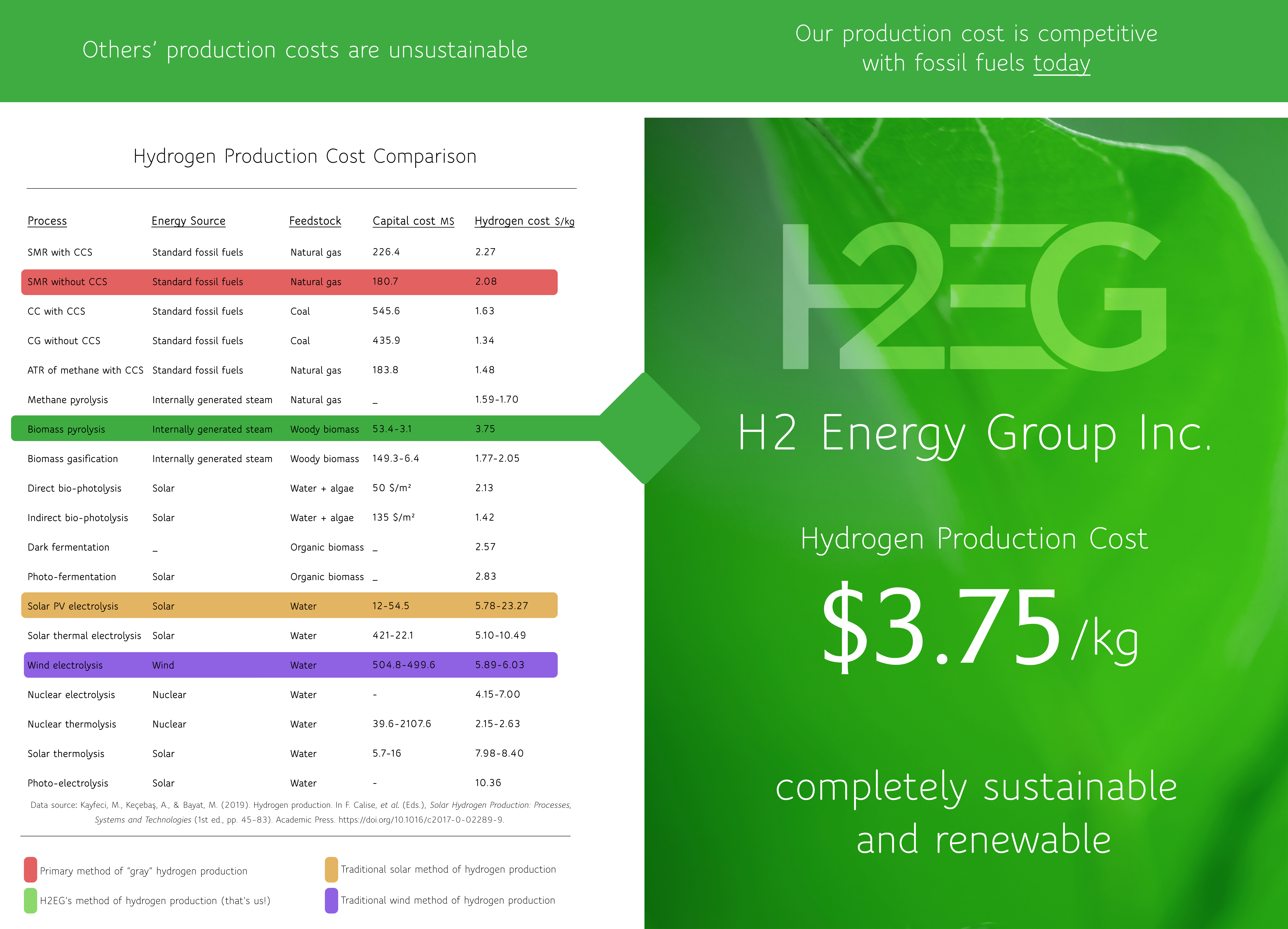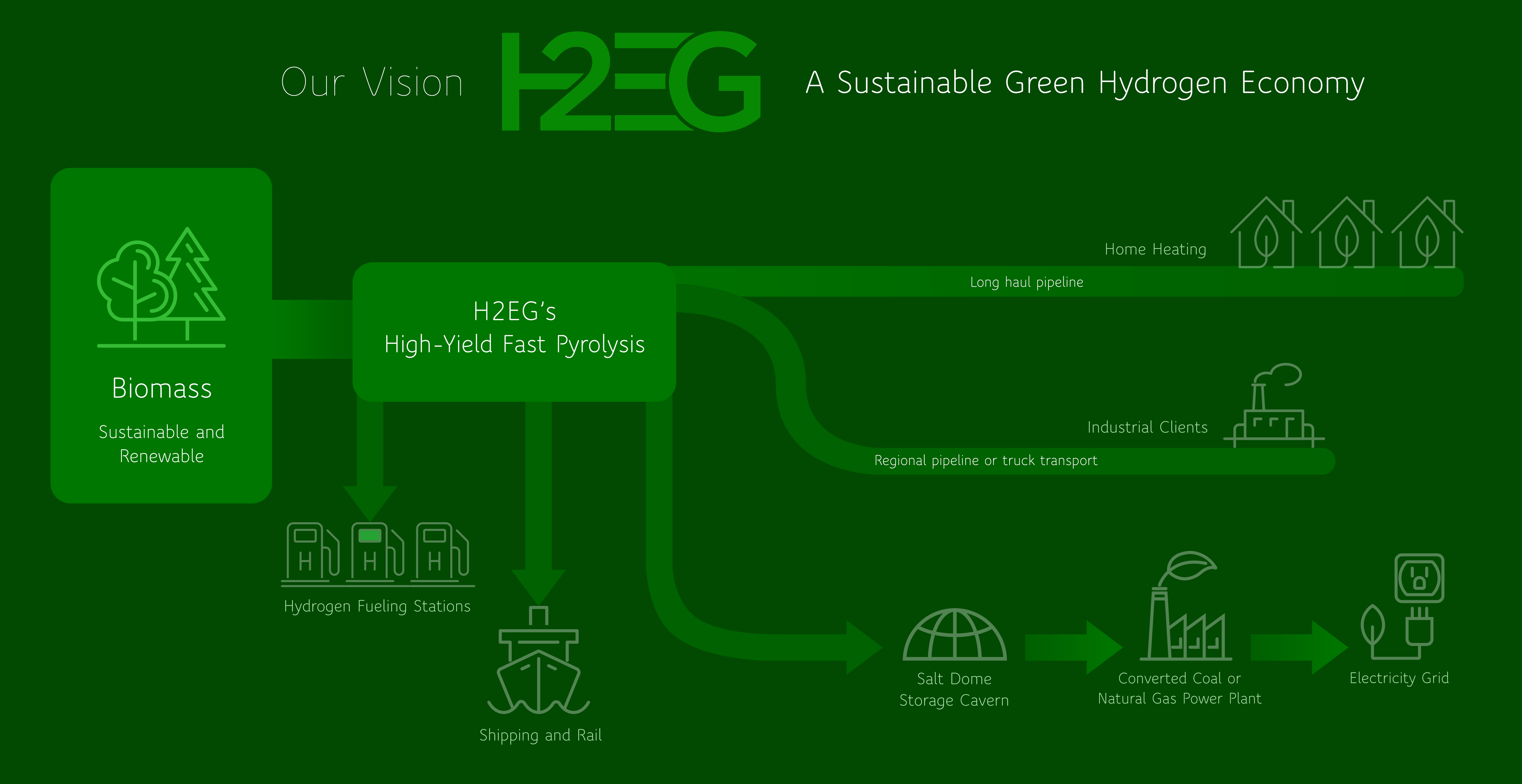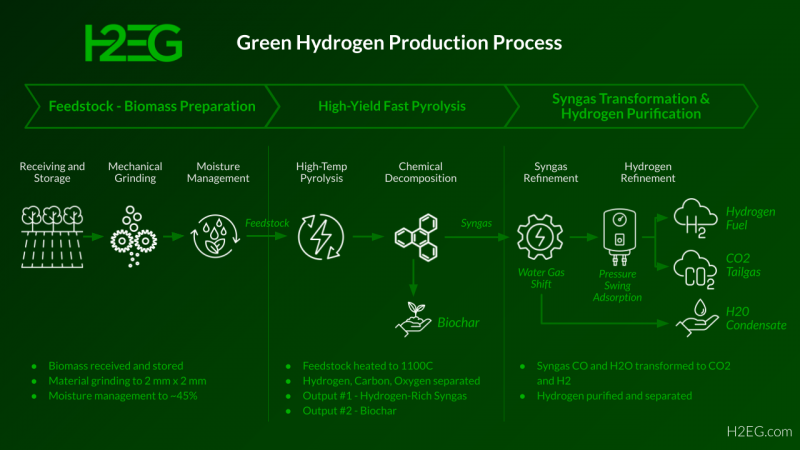Welcome to H2 Energy Group
Our Hydrogen production technology uses completely sustainable and renewable biomass to produce the world’s lowest-cost, green Hydrogen. H2EG wants to bring our unique Hydrogen production technology to the world and help transition our economies away from fossil fuels to achieve a net-zero energy system.
While most Hydrogen produced today (about 96%) is derived from fossil fuels that pollute our environment, H2EG uses renewable biomass to produce Hydrogen fuel with zero emissions. That is truly sustainable green Hydrogen production!
Our Hydrogen production technology uses completely sustainable and renewable biomass to produce the world’s lowest-cost, green Hydrogen. H2EG wants to bring our unique Hydrogen production technology to the world and help transition our economies away from fossil fuels to achieve a net-zero energy system.
While most Hydrogen produced today (about 96%) is derived from fossil fuels that pollute our environment, H2EG uses renewable biomass to produce Hydrogen fuel with zero emissions. That is truly sustainable green Hydrogen production!
The Future of Hydrogen Power, Available Today
The Future of Hydrogen Power, Available Today

























